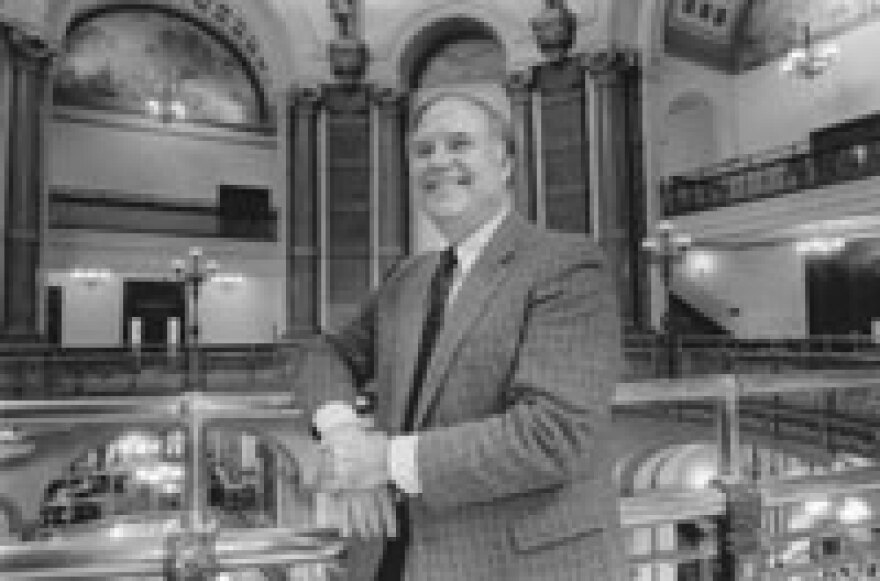Was it a fluke? A one-time phenomenon triggered by a charismatic favorite son?
Or do the results of last month’s primary election signal a tectonic shift in regional party strength in Illinois?
Certainly no one was surprised that U.S. Sen. Barack Obama easily outpolled U.S. Sen. Hillary Rodham Clinton in the Democratic presidential contest. After all, hadn’t party leaders intentionally engineered the primary vote six weeks earlier than usual, just to boost Obama’s national fortunes?
The junior senator came through as expected, almost doubling the former first lady’s popular vote, with slightly more than 1.3 million to her 666,000 and change, in unofficial returns.
The real eye-opener in the primary, though, was the sheer volume of the Democratic vote. Obama, for example, polled more votes than all nine Demo-cratic presidential hopefuls in the 2004 primary. In fact, he racked up some 1,300 more votes than the total number of Democratic ballots cast four years ago.
And, for the first time since the modern-day primary system came into being some 40 years ago, more Democrats than Republicans voted in each of the five collar counties surrounding Chicago, including DuPage County, long the symbol of GOP might.
Unofficial returns showed that Democrats cast more than 131,000 votes in DuPage County, topping Republican voters by almost 24,000 ballots. In similar fashion, more Democrats than Republicans voted in Kane and McHenry counties, another first. In all, more than 392,000 Democratic presidential votes were cast in the five counties, roughly 200,000 more than in 2004 and almost five times the Democratic turnout in 2000, when 77 percent of collar county primary voters took Republican ballots.
Outside the Chicago area, Democrats outvoted Republicans in 57 of the 96 downstate counties, an 11-county gain from their 2004 showing.
The Democratic surge was fueled no doubt by the historic match-up between Obama and Clinton, the first time in national history that the two leading contenders for a major party’s presidential nomination did not include a white male. Moreover, Obama’s rock-star persona seems to have energized young people and political outsiders to an extent not seen in decades, reminding some of Jack Kennedy and others of Gene McCarthy.
The senator’s appeal to younger voters seems evident in the primary returns from six downstate counties that are home to some of the state’s largest public universities. Together, the six counties saw their Democratic vote almost double, while GOP numbers increased by only about 10 percent. In Champaign County, for example, home of the University of Illinois at Urbana-Champaign, slightly more than 23,000 voters cast Democratic ballots, almost three-quarters of them for Obama, compared with roughly 15,000 for Republican candidates. Four years ago, the total Democratic vote was just shy of 12,000, while the GOP garnered more than 14,000.
Similar large Democratic gains occurred in Coles (Eastern Illinois University), DeKalb (Northern Illinois University) and McDonough (Western Illinois University) counties, all of which saw Republican majorities in the 2004 presidential primary. Jackson County (Southern Illinois University Carbondale), usually reliably Democratic through the years, experienced a 14 percent increase in Democratic voters. Democrats even gained ground in McLean County (Illinois State University), going to 49 percent of the primary ballots cast from less than a third in 2004.
While Democrats can revel in the numbers, Republicans rightly should be concerned. Some party elders believe the remarkable Democratic showing merely reflects the diverse choice offered to party voters, along with Obama’s personal charisma. Sure, they say, the senator has brought a lot of new folks to the polls with his message of change, vague though it may be. But will these newbies be as enthusiastic in November, when the novelty will have worn off? Especially if the Democratic contest continues neck and neck to the convention in Denver, and the nominee ultimately is chosen by party chieftains, also called superdelegates?
Moreover, they point out that Demo-crats generally do better in the spring than in the fall. In the general election four years ago, for example, President George W. Bush won 82 of 96 downstate counties, including 34 that pulled more Democratic ballots in March.
Clearly, the GOP brass is hoping for a similar reversal for the sake of the party’s local candidates and for its future return to prominence in the Land of Lincoln. The concern is an Obama landslide — if he’s the Democrats’ nominee — that could cost Republicans congressional and legislative seats, and perhaps local offices, too, if new voters drawn by the senator hew to the party line on down the ballot.
But underlying the Obama mystique could be a more threatening reality for Republicans. What if February’s historic shift in collar county voting patterns is but another step in the ongoing partisan realignment of the suburbs, nurtured by demographic change and party ideology?
Consider the demographics. Two years ago, Democrats elected state senators from four suburban districts, two of them with significant chunks of counties that had never before sent a Democrat to the Senate. In both districts, though, the population of Hispanic residents has been growing, many of whom are inclined to vote Democratic. The virulent anti-immigrant rhetoric spouted by some Republican politicians wins the party few friends among these voters, whose collar county numbers are projected to increase markedly in coming years. Not a cheerful prospect for the GOP.
Political realignment in response to demographic change is nothing new in suburbia, of course. A few decades ago, west suburban Cicero boasted a strong Bohemian ethnic flavor and one of Cook County’s strongest Republican township organizations. Now, the town is roughly 80 percent Hispanic and a Democratic bastion. Similarly, the once solid Republican south suburbs have become safe Democratic havens as their minority citizens have increased in number.
The 2008 primary suggests a similar future could await the collar counties, its arrival hastened by the meteoric rise of Barack Obama.
Charles N. Wheeler III is director of the Public Affairs Reporting program at the University of Illinois at Springfield.
Illinois Issues, March 2008





